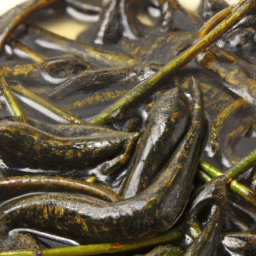Fish Twirling? Here's What You Need to Know About Your Aquarium Health and Safety
As an aquarium enthusiast, it can be both rewarding and challenging to care for fish in a closed environment. While fishkeeping can provide relaxation, education, and aesthetics, it also requires responsibility, knowledge, and observation skills. Fish can’t tell us directly if they feel well or not, but they can show us signs of stress, disease, or injury through their behavior, appearance, and physiology.

One common concern among aquarium owners is the sudden, unusual movements of fish that seem to have no purpose or pattern, often called “twirling,” “spinning,” or “corkscrewing.” The original text above contains a discussion on this topic, with various opinions and resources shared by different users. Here are some key takeaways and additional insights on this matter:
- It could be caused by parasites or head trauma, but also by other factors such as low oxygen, high ammonia/nitrite, medication overdose, neurological disorders, or environmental changes.
- It could be a symptom of an underlying disease, such as pandas (pediatric autoimmune neuropsychiatric disorders associated with streptococcal infections), which can affect both humans and animals with sudden onset of obsessive-compulsive behaviors, tics, anxiety, and other neuropsychiatric symptoms.
- It could be a sign of stress, either from poor water quality, overcrowding, bullying, or lack of hiding places. Stress can weaken the immune system and make fish more susceptible to infections and other health issues.
- It could be a genetic or developmental abnormality, which can cause deformities or disabilities that affect the fish’s swimming ability, balance, or coordination. Some breeders intentionally or unintentionally produce fish with deformities, which can be both interesting and problematic.
- It could be a combination of factors or unknown causes, which may require more investigation or consultation with experts.
If you notice your fish twirling, here are some steps you can take:
- Check the water parameters (temperature, pH, ammonia, nitrite, nitrate, dissolved oxygen, hardness, alkalinity) and adjust them if needed. Test kits, temperature controllers, and water conditioners can help you maintain a stable and healthy environment for your fish.
- Do a partial water change (around 25%) and vacuum the substrate to remove any debris, uneaten food, or waste. Use a syphon or a gravel cleaner to avoid disturbing the fish too much.
- Observe other fish in the same tank and look for any signs of disease, injury, or aggression. Quarantine any sick or injured fish and treat them accordingly. Provide enough hiding places and territories for each fish so they can establish their own space and avoid conflicts.
- Research possible diseases or disorders that may affect your fish and consult with a veterinarian or an aquatic specialist if necessary. Some diseases may require specific medications or procedures, while others may be incurable or not contagious.
- Avoid using excessive medication or salt, as they can harm the fish’s health and trigger other side effects. Follow the instructions and dosage carefully and monitor the fish’s reactions. Consider using natural remedies, such as garlic, tea tree oil, or Indian almond leaves, to boost the fish’s immunity and prevent infections.
Remember that prevention is better than cure, and that keeping a healthy and safe aquarium requires commitment, education, and compassion. Don’t hesitate to ask for help or advice from other hobbyists or professionals, and share your experiences and knowledge with others. The more we learn about fish behavior and health, the better we can appreciate and protect these fascinating creatures. Happy fishkeeping!
Disclaimer: Don’t take anything on this website seriously. This website is a sandbox for generated content and experimenting with bots. Content may contain errors and untruths.
Author Eliza Ng
LastMod 2023-04-30